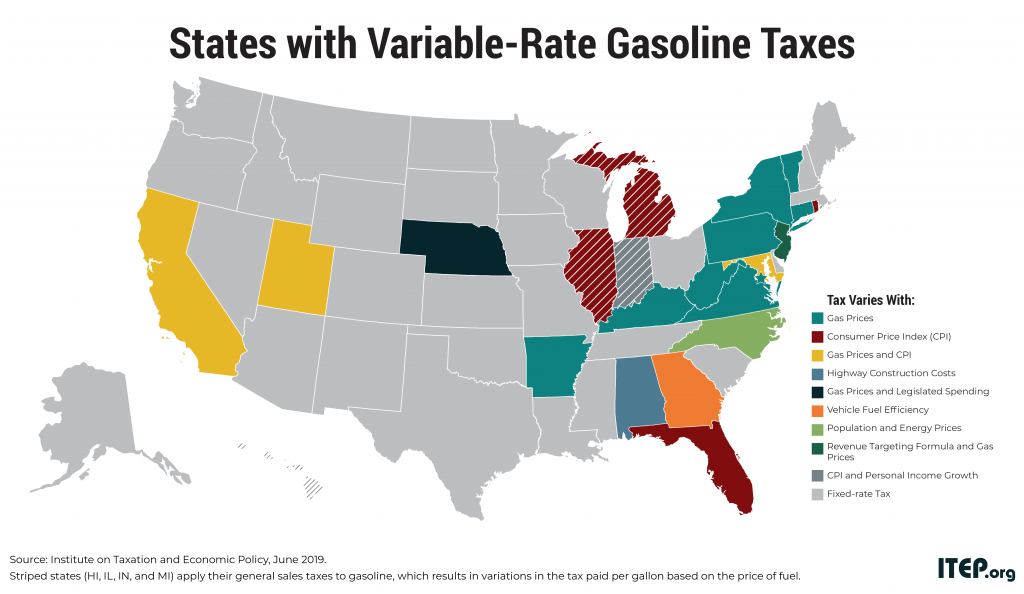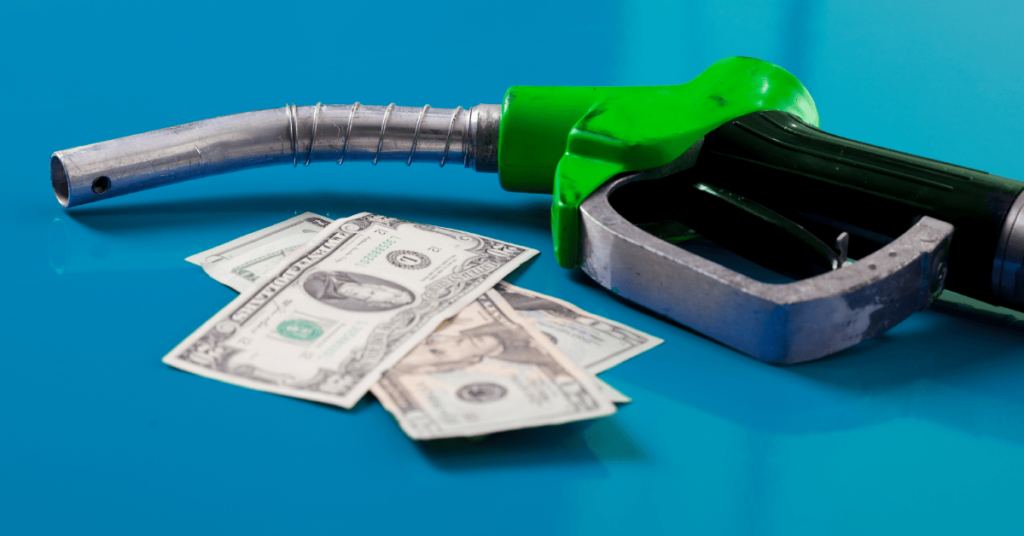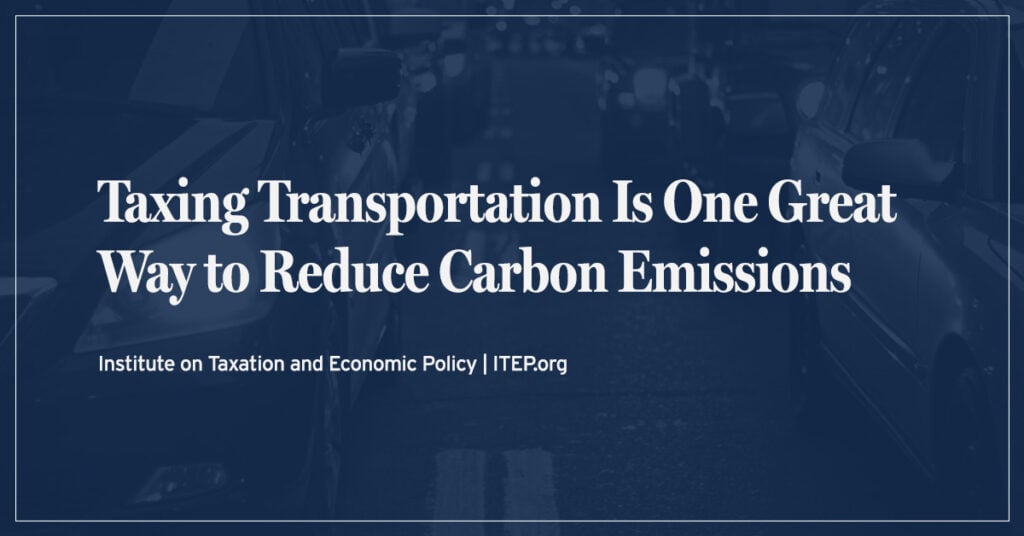The post was updated in June 2019.
Illinois now enjoys the distinction of being the 31st state to raise or reform its gas tax this decade, and the fourth state to do so this year, under a bill signed into law by Gov. J.B. Pritzker. While state tax policy can be a contentious topic, there has been a remarkable level of agreement on the gasoline tax.
Increasingly, state lawmakers are deciding that outdated gas taxes need to be raised and reformed to fund infrastructure projects that are vital to their economies. These actions are helping reverse losses in gas tax purchasing power caused by rising construction costs and improvements in vehicle fuel efficiency.
And a growing group of states has decided not just to fix past problems, but to plan for the future as well. Eight states have abandoned fixed-rate gas taxes (flat cent-per-gallon taxes) since 2013 in favor of variable-rate gas tax structures that will allow them to raise sustainable gas tax revenues for the long haul. In total, 22 states (home to 59 percent of the U.S. population) now levy variable-rate gas taxes under which the tax rate tends to rise over time.
A summary of gas tax increases and reforms enacted since 2013 is provided below. This list is current as of June 25, 2019.
2019 Enacted Legislation
- Alabama: The first stage of a 10-cent increase will take effect on Sep. 1, 2019, when the gas tax rate rises by 6 cents. Additional 2-cent increases will occur on Oct. 1, 2020, and Oct. 1, 2021. Beginning in 2023, Alabama will implement a variable-rate formula under which the tax rate will rise alongside increases in the cost of highway construction.
- Arkansas: A new tax equal to 1.6 percent of the average wholesale price of fuel will take effect on Oct. 1, 2019.
- Illinois: The gas tax will rise by 19 cents and the diesel tax by 24 cents on July 1, 2019. Looking ahead, the gas tax rate will also be indexed to inflation so that the tax can retain its purchasing power with small, periodic increases in the years to come.
- Ohio: A 10.5-cent gas tax and 19-cent diesel tax increase will take effect on July 1, 2019. Gov. Mike DeWine also proposed indexing the state’s gas tax rate to inflation, but this reform was not included in the final bill.
2018 Enacted Legislation
- Oklahoma: The gas tax rose by 3 cents and the diesel tax by 6 cents on July 1, 2018. This was Oklahoma’s first gas tax increase since 1987. While the revenue raised by this change will be directed toward the state’s transportation infrastructure, an equivalent amount of general fund money that was previously being used to fund transportation is now being rerouted to teacher pay raises instead.
2017 Enacted Legislation
- California: A 12-cent gas tax increase and 20-cent diesel tax increase took effect on Nov. 1, 2017. The new law also changed the formula that California uses to implement ongoing gas tax rate adjustments. Among those changes are a new provision allowing for gas tax increases based on the rate of inflation within the state’s borders. A 2018 ballot measure asked voters to repeal these increases and reforms, but voters rejected that measure by a margin of 57 percent to 43 percent.
- Indiana: A 10-cent increase took effect on July 1, 2017. Further adjustments will occur between 2018 and 2024 based on a new formula that considers both inflation and the rate of growth in Indiana’s personal income. The new law also shifts the portion of sales tax revenue collected on gasoline purchases out of the general fund and toward transportation instead.
- Montana: A 6-cent gas tax increase and 2-cent diesel tax increase will be gradually phased-in, with the final stage taking effect on July 1, 2022.
- Oregon: A 10-cent increase will take effect in four stages, starting with a 4-cent increase that took place on Jan. 1, 2018, and ending with a 2-cent increase on Jan. 1, 2024.
- South Carolina: The legislature overrode Gov. Henry McMaster’s veto to enact a 12-cent-per- gallon increase in the tax rate on both gasoline and diesel. The increase is being phased in over 6 years, with 2-cent increases taking effect each July 1 between 2017 and 2022.
- Tennessee: The gas tax will rise by 6 cents and the diesel tax by 10 cents over a span of two years. The final increases take effect on July 1, 2019. While Gov. Bill Haslam initially proposed indexing the state’s gas tax rate to inflation, this reform was not included in the final package passed by the legislature.
- Utah: A new law modifies the variable-rate gas tax formula enacted by Utah lawmakers in 2015 in a way that will allow for somewhat more robust revenue growth. The new formula resulted in a 0.6-cent-per-gallon tax increase in 2019 and will likely trigger a 1.2-cent increase in 2020.
- West Virginia: The gas tax rose by 3.5 cents on July 1, 2017. Because West Virginia’s fuel tax rates are tied to the price of gas, they have fallen since 2014 and have become stuck at their minimum “floor” amount. The new law increases that floor.
2016 Enacted Legislation
- New Jersey: A 22.6-cent-per-gallon increase in the gasoline tax took effect on Nov. 1, 2016. The diesel tax rose by 26.7 cents under a two-stage increase that took effect on Jan. 1 and July 1, 2017. Moving forward, New Jersey’s gas tax rate will vary based on a formula designed to raise a target amount of revenue.
2015 Enacted Legislation
- Georgia: A 6.7-cent increase took effect July 1, 2015. A new formula for calculating the state’s tax rate allows for future rate increases alongside improvements in average vehicle fuel-efficiency. This will allow the tax to retain its purchasing power in the years ahead. The new formula resulted in a 0.3-cent increase on Jan. 1, 2017, a 0.5-cent increase on Jan. 1, 2018. And a 0.7-cent increase on Jan. 1, 2019.
- Idaho: A 7-cent increase took effect July 1, 2015.
- Iowa: A 10-cent increase took effect March 1, 2015.
- Kentucky: Falling gas prices nearly resulted in a 5.1-cent gas tax cut in 2015, but lawmakers scaled that cut back to just 1.6 cents by setting a minimum “floor” on the state’s gas tax rate. The net result was a 3.5-cent-per-gallon increase relative to previous law.
- Michigan: The state’s gasoline and diesel taxes rose by 7.3 cents and 11.3 cents, respectively, on Jan. 1, 2017. Beginning in 2022, the state’s gas tax will begin rising annually to keep pace with inflation.
- Nebraska: A 6-cent increase was enacted over Gov. Pete Ricketts’ veto. Nebraska’s gas tax rate rose in 1.5 cent increments over four years. The final stage of this increase was implemented on Jan. 1, 2019.
- North Carolina: Falling gas prices were expected to trigger a gas tax cut of 7.9 cents per gallon, but lawmakers scaled that cut down to just 3.5 cents, resulting in a 4.4-cent increase relative to previous law. Additionally, a reformed gas tax formula that takes population and energy prices into account will bring further gas tax increases in the years ahead. The first of those increases (0.3 cents) took effect on Jan. 1, 2017, the second (0.8 cents) took effect on Jan. 1, 2018, and the third (0.8 cents) took effect on Jan. 1, 2019.
- South Dakota: A 6-cent increase took effect April 1, 2015.
- Utah: A 4.9-cent increase took effect on Jan. 1, 2016. Future increases will occur under a new formula that considers both fuel prices and inflation. This formula was modified under legislation enacted in 2017 to allow for faster gas tax revenue growth.
- Washington State: An 11.9-cent increase was implemented in two stages: 7 cents on Aug.1, 2015, and a further 4.9 cents on July 1, 2016.
2014 Enacted Legislation
- New Hampshire: A 4.2-cent increase took effect July 1, 2014.
- Rhode Island: The gas tax rate was indexed to inflation. This resulted in a 1-cent increase on July 1, 2015, and will lead to further increases in most odd-numbered years thereafter. No adjustment was made in 2017 because inflation was relatively low.
2013 Enacted Legislation
- Maryland: A significant gas tax reform, which tied the tax rate to inflation and fuel prices, was implemented in stages starting on July 1, 2013. Since then, the state’s tax rate has increased by 11.8 cents above its early 2013 level.
- Massachusetts: A 3-cent increase took effect July 31, 2013.
- Pennsylvania: A significant gas tax reform, tying the rate to fuel prices, took effect in stages starting on Jan. 1, 2014. As a result of this reform, the gasoline tax rate has increased by 26.4 cents per gallon while the diesel tax has increased by 36 cents.
- Vermont: A 5.9-cent increase and modest gas tax restructuring took effect May 1, 2013. Since Vermont’s gas tax rate is linked to gas prices, however, the actual rate has varied since then.
- Virginia: As part of a larger transportation funding package, lawmakers raised statewide diesel taxes effective July 1, 2013, as well as gasoline taxes in the populous Hampton Roads region. Outside of Hampton Roads, gasoline taxes are 1.3 cents lower than they were before the reform, but a new formula included in the law will cause the tax rate to rise alongside gas prices in the years ahead.
- Wyoming: A 10-cent increase took effect July 1, 2013. Gov. Matt Mead’s signature on this increase made Wyoming the first state to approve a gas tax increase in over three and a half years (no state enacted a gas tax increase in 2010, 2011, or 2012).
- District of Columbia: Legislation approved in 2013 has yet to impact Washington D.C.’s gas tax rate in practice, though by tying its tax rate to fuel prices the District opened the door to potential gas tax rate increases in the future.





